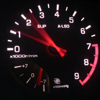Fuel System Problem ?
Announcements
-
Similar Content
-
Latest Posts
-
Could you put a real seat and harness in instead of what looks like leaving your passenger balancing on a milk crate
-
By Dose Pipe Sutututu · Posted
Alarm installs, always great to look at 🥲 Then these alarm installers then go and do automotive looms and they end up being a crock of shit. -
Photo quality is terrible, but there's a few things on that board that give me suspicions it has some issues. Add to that, I'm hoping the cut and exposed wires under the dash were not exposed or touching each other before you pulled that all apart.
-
By joshuaho96 · Posted
Stories like this are why the immobilizer installs I've done are 100% reversible. No harness cuts.
-








Recommended Posts
Create an account or sign in to comment
You need to be a member in order to leave a comment
Create an account
Sign up for a new account in our community. It's easy!
Register a new accountSign in
Already have an account? Sign in here.
Sign In Now